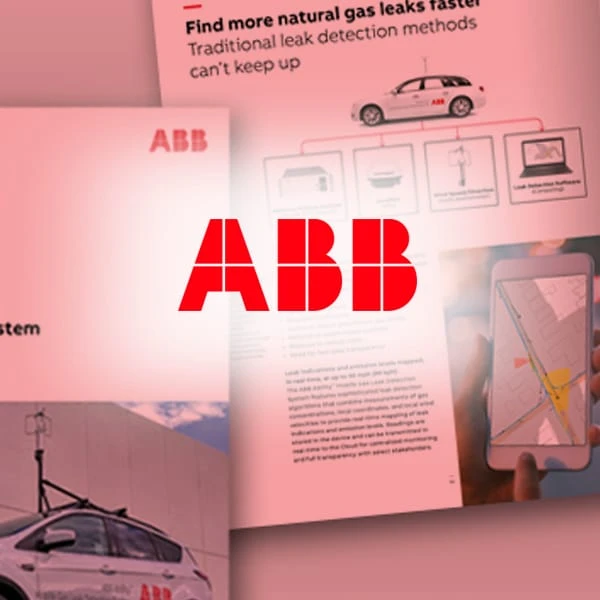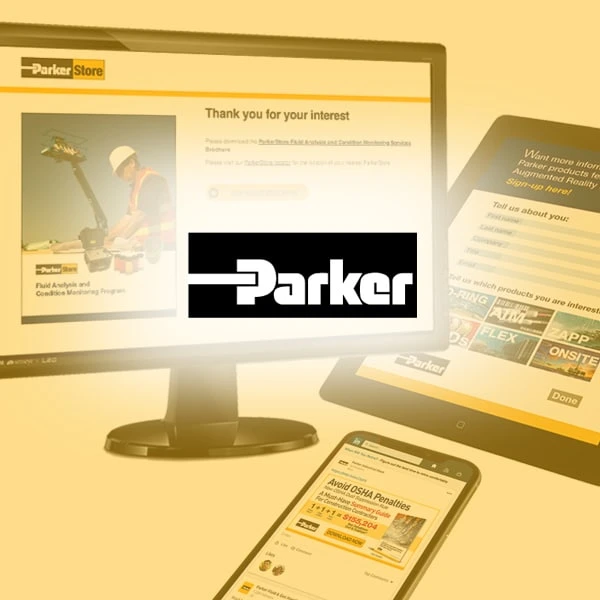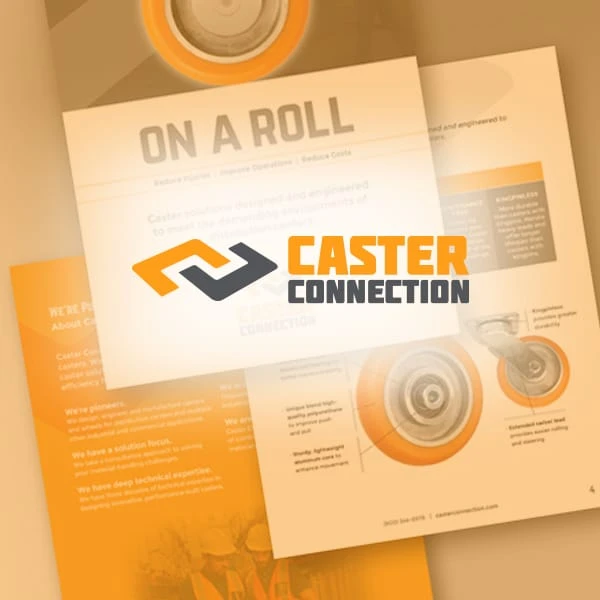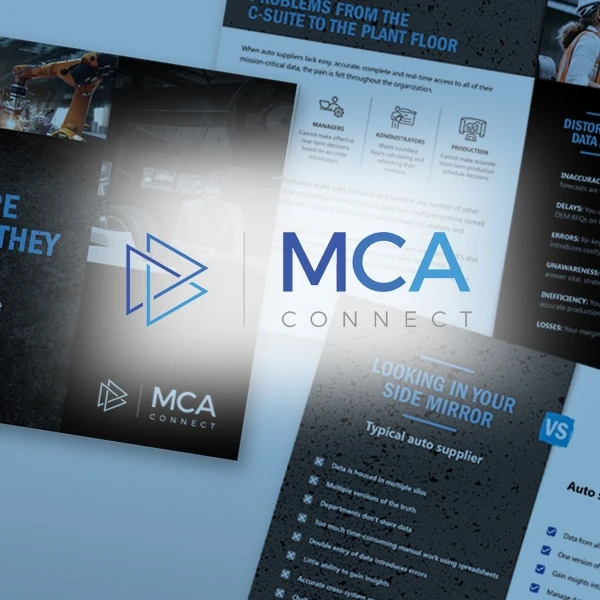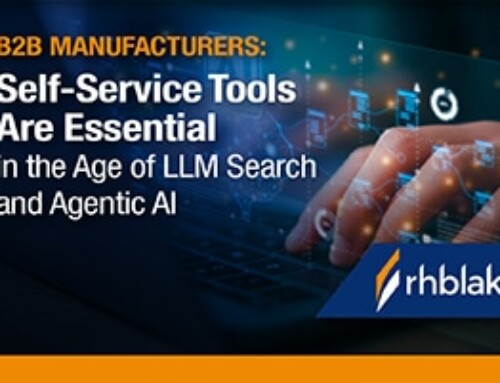For B2B industrial manufacturers, understanding the difference between thought leadership and content marketing is essential for optimizing marketing strategies.
What Is a Good Domain Authority for Manufacturers?
Your manufacturing firm may not be in the Fortune 500, but your digital presence has to act as though you are. Why? Because your prospects aren’t just comparing you with companies your size. They’re comparing you against the best-known manufacturers in your industry. And, more than ever before, they’re evaluating you online first.
This means online is where you are competing first. Your first conversation with a buyer isn’t a discovery call or an email exchange anymore. A buyer’s first contact with your brand is now a one-way conversation that they have with your website. And because search engines and AI platforms are increasingly favoring authoritative sources, if you want to compete, your site must show up in their results. And one of the best ways to do that is by improving your Domain Authority (DA).
What Is Domain Authority
Domain Authority is a metric developed by Moz that predicts how likely a website is to rank in search engine results. It’s scored on a scale from 0 to 100, with higher scores indicating stronger authority. The score is calculated using machine learning and takes into account multiple factors, including:
- Number and quality of backlinks pointing to your website
- Number of unique referring domains
- Credibility and relevance of your content
- Technical SEO factors, such as crawlability
Domain Authority isn’t used directly by Google, but it’s a strong proxy for how well your site is likely to rank. It’s also highly correlated with how often your content is referenced in AI-generated research tools, like ChatGPT, Perplexity, Gemini and Copilot.
Domain Authority is one metric in a quartet of proprietary KPIs, each one developed by a firm that specializes in search optimization. The other metrics are:
While each tool has its own scoring system, they all point toward the same idea: websites that are seen as trusted and credible tend to rank higher and be cited more often.
In general, your goal should be to increase your Domain Authority relative to your direct competitors and market peers. For most B2B manufacturers, that means aiming for a score of 41 or higher.
Benchmarking Domain Authority in Manufacturing
At RH Blake, we recently researched the top 613 global manufacturers by market cap. We found that the average Domain Authority among these companies is 41.
This means, if you want to compete for visibility, especially against large industry players, your website must score in this range. Otherwise, your site may be overlooked not just by Google, but also by the AI tools your prospects are using to research solutions.
For example, how do you rank against these top-tier manufacturers?
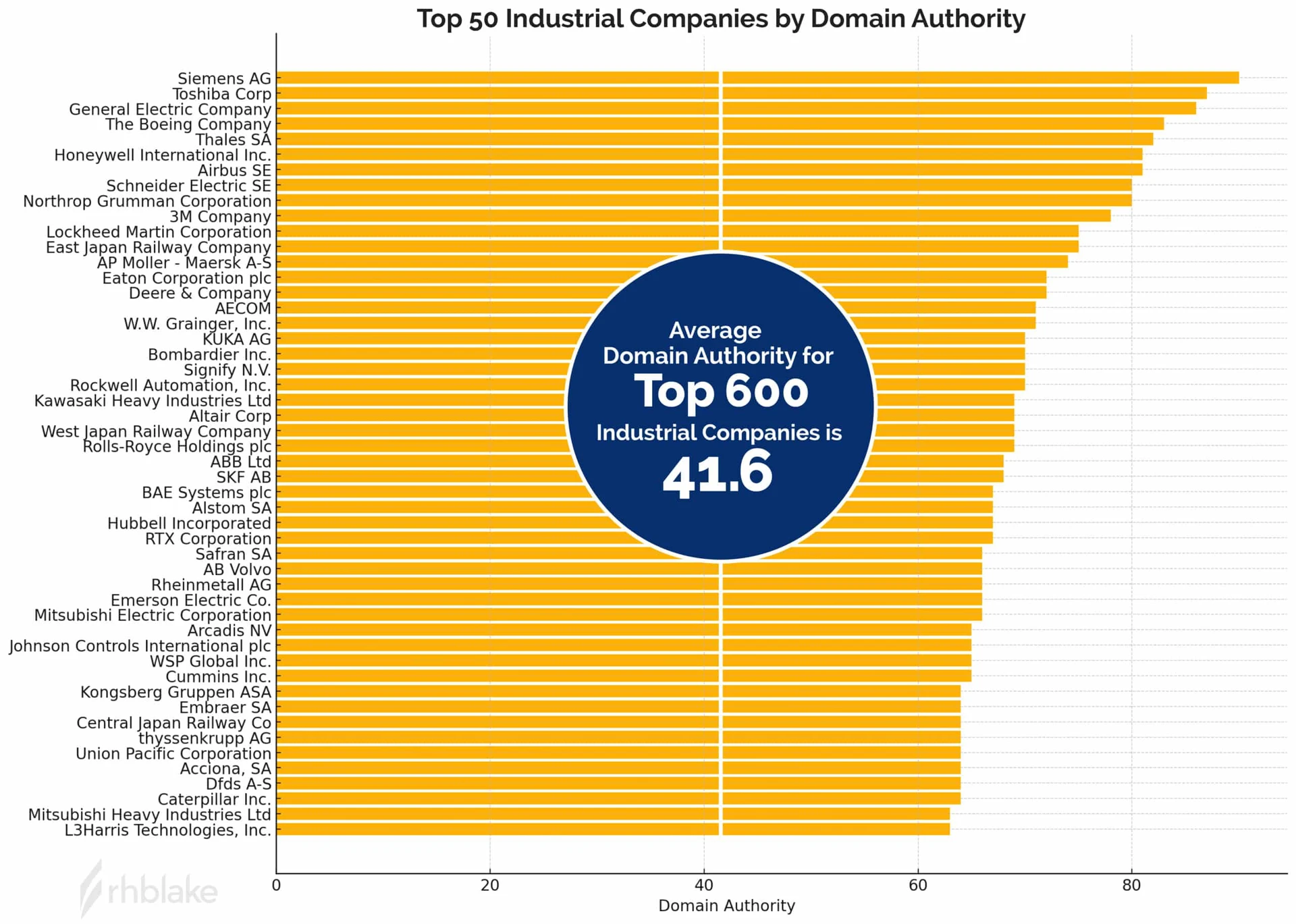
These companies consistently appear in search results and AI-generated answers because their websites are seen as authoritative.
If your prospects evaluate you alongside any of these companies, or if you sell into the same markets, your Domain Authority must reflect that.
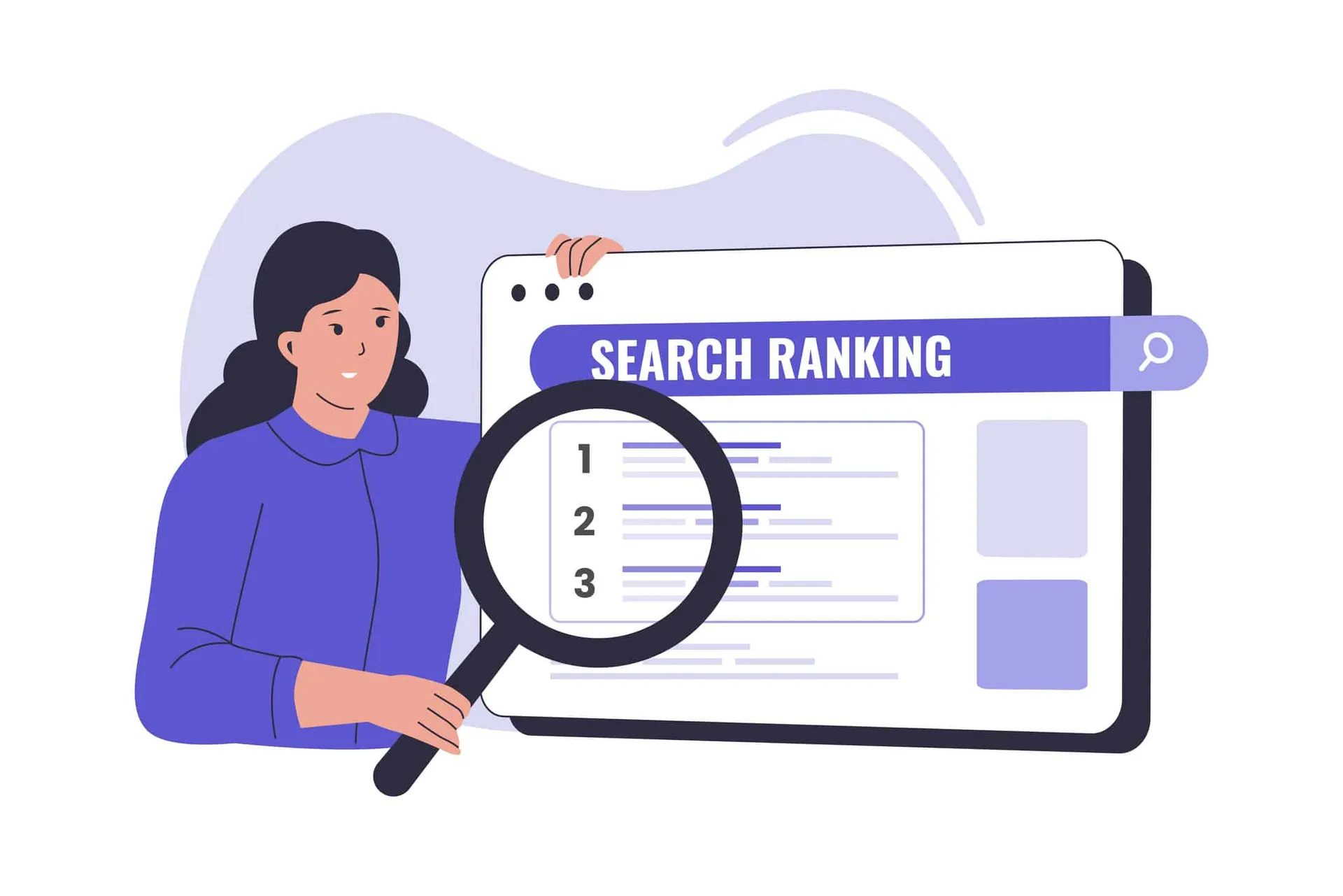
What Do Domain Authority Scores Mean?
Here’s a quick breakdown of how to interpret your Domain Authority:
- 1–20: New or low-authority websites. Still building trust.
- 21–40: Modest authority. Sites at this level may rank for niche terms.
- 41–60: Strong domain. Often found on page one of search results.
- 61–80: Highly authoritative. Trusted sources within their industry.
- 81–100: The highest authority. Global brands and major media outlets.
Why Domain Authority Now Deserves More Strategic Focus
There are two major reasons that Domain Authority matters more than ever in 2025 and beyond.
1. Search engines are prioritizing authority
Google has always emphasized authority, but their recent updates to their algorithms have made it even more central. The introduction of the EEAT framework (Experience, Expertise, Authoritativeness, Trustworthiness) places new weight on the credibility of your website and your content.
Sites with higher Domain Authority are:
- More likely to rank for competitive terms
- More likely to appear in featured snippets in search results
- More likely to get indexed and crawled regularly
If you’ve noticed your site slipping in search rankings, a weak Domain Authority might be one of the causes.
2. AI research tools are favoring high-authority sites
Large language models (LLMs) like ChatGPT, Perplexity, Gemini and Copilot often cite high-Domain Authority websites when generating responses. This means, even if your SEO is solid, your company might still be missing out on visibility in AI tools unless your Domain Authority is competitive.
And your prospects are increasingly turning to these AI tools for research. According to Gartner, by 2026, 30% of B2B buyers will use AI to help make purchasing decisions. Translation: If you’re not being referenced in AI results, you’re not being considered.
What Drives Domain Authority for B2B Manufacturers?
To increase your Domain Authority, you need to focus on three core areas: backlinks from trusted sources, technical SEO, and content quality and relevance.
1. Backlinks from trusted sources
The most important driver of Domain Authority is the quality and quantity of your inbound links. In this area, quality is simply another word for trustworthiness. A quality backlink comes from a trusted source. Trusted sources include:
- Trade publications
- News outlets
- Industry associations
- Industry directories
- University research partnerships
- Suppliers
- Channel partners
- Government agencies
- Standards organizations
Getting backlinks from these types of sites signals to search engines and LLMs that your company is a credible player in the industry.
2. Technical SEO
Next up is user experience. Your website needs to be fast, mobile-friendly and easy to crawl. Tools like Google Search Console and Screaming Frog help you identify broken links, duplicate content, crawl errors and poor mobile performance. Fixing these issues improves your search rankings while also improving the user experience of your web pages.
3. Content quality and relevance
Thought leadership content is one of the best ways to build authority. High-quality blog posts, whitepapers, research reports and industry analysis generate backlinks naturally, position your experts as credible sources and increase time on site and user engagement.
Not sure where to start? Check out our report on Thought Leadership Marketing Trends in Manufacturing. It outlines how B2B manufacturers are using thought leadership content to improve visibility, credibility and sales.

How to Improve Your Domain Authority
Building Domain Authority takes time, but it’s one of the most valuable digital investments you can make. Here’s how to get started:
- Build high-quality backlinks
- One of the most effective ways to increase your Domain Authority is by building high-quality backlinks from trusted industry sources. Start by reaching out to industry publications and offering expert commentary or thought leadership articles. These outlets are always looking for authoritative voices and can be a great source of referral traffic.
- You should also list your business in reputable manufacturing directories, which not only improve your online presence but also provide valuable inbound links.
- Consider forming partnerships with universities or research organizations to collaborate on whitepapers or case studies. These partnerships often result in backlinks from highly credible domains.
- Actively promote your content on LinkedIn and in relevant industry forums where your target audience is engaged. The more your content is seen and shared, the more likely it is to earn organic links.
- Publish better content
Improving your Domain Authority also requires publishing content that is informative, relevant, and trustworthy.- Focus on creating materials that demonstrate depth, subject-matter expertise, and clear insights. High-quality content not only helps with SEO but also builds your credibility with prospects. Incorporate original research, case studies, or firsthand observations to provide unique value that can’t be found elsewhere.
- Align your content topics and formats with the questions and challenges your target buyers face during their decision-making process.
- Revisit and update older posts to keep them relevant. Refreshing content with new data, updated strategies or improved formatting can boost its performance and keep it visible in search results.
- Strengthen your technical SEO
Technical SEO plays a foundational role in how search engines access, understand, and rank your website.- Begin by using tools like Google PageSpeed Insights to evaluate and improve your site’s loading speed, which affects both user experience and search rankings.
- Ensure your site is fully mobile-responsive, as a growing share of B2B searches now happen on smartphones and tablets.
- Fix any broken links, duplicate content, or crawl errors that could prevent search engines from properly indexing your pages.
- Create a clean site structure with clear internal linking to help both users and bots navigate your content easily. A well-optimized site not only supports higher rankings but also signals professionalism and credibility to your visitors.
- Promote Your Content
Remember, great content doesn’t earn links unless people see it. Use your email list, social channels, industry groups and partnerships to promote each piece. - Track Progress and Benchmark Competitors
To make meaningful progress in improving your Domain Authority, it’s essential to consistently monitor your performance and benchmark it against competitors.- Start by using trusted SEO tools like Moz, Ahrefs or Semrush, which offer detailed insights into your Domain Authority score, backlink profile, referring domains, and keyword visibility. These platforms also allow you to track how your authority stacks up against your direct and indirect competitors, helping you understand where you stand in the digital landscape of your industry.
- Once you’ve established a baseline, set realistic, measurable goals for improvement. A good practice is to review your progress on a quarterly basis. For example, you might aim to earn a certain number of high-quality backlinks, increase the number of referring domains, or improve rankings for a set of priority keywords each quarter. Regular tracking allows you to identify what’s working, make data-driven decisions, and adjust your strategy in response to changes in the market or Google’s algorithms.
- In addition to tracking Domain Authority itself, monitor related metrics, like organic traffic, bounce rate, and average session duration, to get a fuller picture of how your content is performing. Remember that increasing Domain Authority is a long-term effort. Progress may be gradual, but consistent effort and regular analysis will help you build a stronger, more competitive online presence over time.
Domain Authority and Competitive Positioning
In the manufacturing sector, your website can no longer afford to be simply a corporate brochure or a product catalog. Your website signals your credibility. Buyers, specifiers, distributors and partners evaluate you online long before they reach out. And if your Domain Authority is significantly lower than your competitors’, then they may never find you at all.
Think of Domain Authority as your company’s digital reputation score. The higher it is, the more likely you are to be trusted, by search engines, by AI platforms, and by human buyers alike.


Conclusion: Aim for a Domain Authority of 41 or Higher
If you want to compete with the top manufacturers in your sector, you need to show up where your buyers are looking. That means improving your Domain Authority.
Here’s what to do next:
- Audit your current Domain Authority using Moz, Ahrefs or another tool
- Benchmark your score against your competitors and industry averages
- Focus on building backlinks, publishing expert content, and fixing technical SEO issues
A Domain Authority of 41 or higher puts you in the competitive range of the top 613 manufacturers globally. If you’re not there yet, we can help. At RH Blake, we specialize in helping B2B manufacturers grow their visibility, trust and influence online through optimized, strategic through leadership. Let’s talk about how we can help you earn the digital authority you deserve.

"You guys met our expectations in every way. It [RH Blake Market Research] was the information we were looking for. Congratulations and Thank You!"
 Scott Griggs
Scott Griggs
Director of Services for Food Manufacturing and Food Service
ALS Global

"“I’ve gotten all that I’d hoped for from the RH Blake Growth Roadmap™ and more. Based on the research and insights, we adjusted our offering scope and sales approach. And this adjustment has been effective at generating new opportunities."
 Diane Reko
Diane Reko
President
REKO International

"RH Blake has been an outstanding partner. They deliver creativity, on time, and always so professional. We love working with them because of their perspective, support, and their efficiency in turning projects around quickly."
 Samantha Spano
Samantha Spano
Digital Product Marketing & Communications Manager
Industrial Automation Energy Industries
ABB
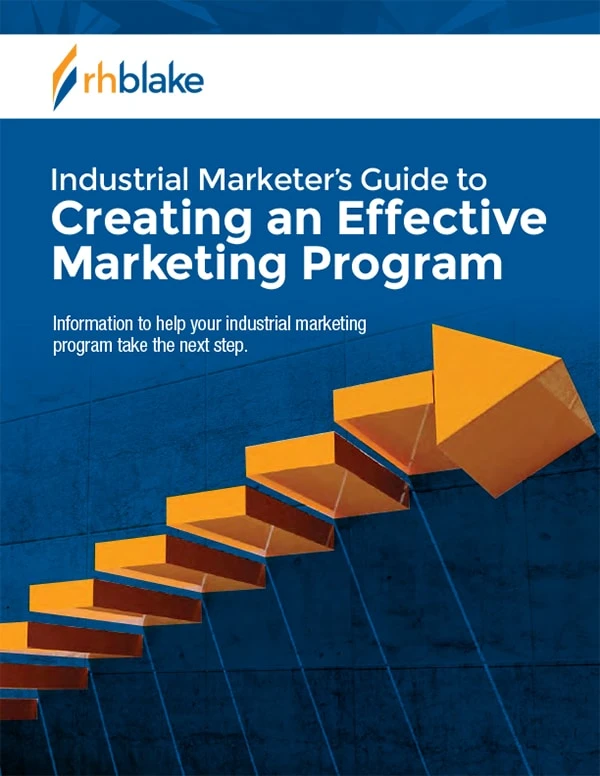
Industrial Marketer’s Guide to Creating an Effective Marketing Program
147 pages of actionable ideas to help you create a winning marketing strategy and program

Industrial Marketer’s Guide to Creating an Effective Marketing Program
147 pages of actionable ideas to help you create a winning marketing strategy and program
Related Clients



